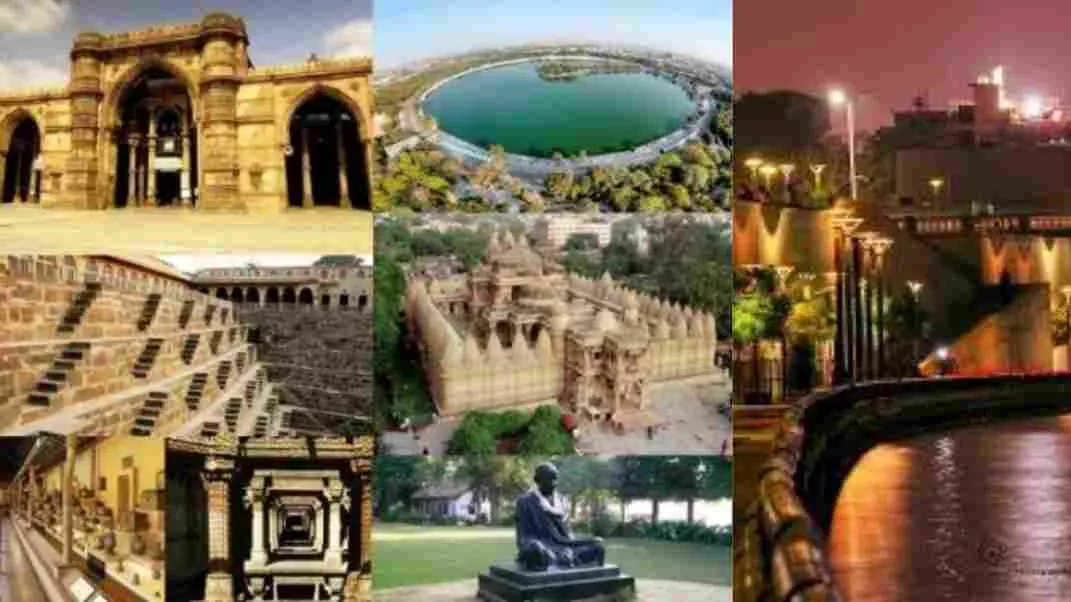Ahmedabad was established as a walled city on the eastern bank of the River Sabarmati in 1411 AD, making it the seventh-biggest metropolis in India and the largest city in Gujarat.
In Western India's past, Ahmedabad has been one of the most significant hubs for manufacturing and business. In addition, it is a significant economic and industrial hub, accounting for 60% of state production and 14% of all stock exchange investments in India.

The city of Ahmedabad has a long history. The city, which Sultan Ahmed Shah founded on the Sabarmati River in the 15th century, has been governed by many emperors.
Following Bombay's division on May 1st of that year, the city was designated as Gujarat's capital. During this time, the city saw the growth of academic institutions. But politics later in the two decades pierced the city. As a result, the city took centre stage in the country's politics.
Being the hub of Gujarati cultural activities as well as the unique traditions of different ethnic and religious groupings, Ahmedabad has a rich artistic heritage.
A well-known holiday and celebration is Uttarayan, a day set aside each year for kite flying on January 14th. People execute the Gujarati folk dance known as Garba during the nine nights of Navratri.
They enjoy other holidays like Christmas, Deepavali, Holi, and Eid ul-Fitr with just as much fervour. The annual Rath Yatra celebration on the Hindu calendar's Ashadh-sud-bij day and the Tajia ritual during the Muslim holy month of Muharram are both essential components of the city's multifaceted culture.
The economy of Ahmedabad is growing because it is a trade city. The economy primarily depends on industries like chemicals, textiles, medicine, and drugs. The Ahmedabad Textile Industry's Research Association (ATIRApresence) has contributed to the city's status as a significant textile industry hub.
The main industries are mainly in this city, particularly the textile sector. The city's textile industry is its main source of income. Arvind Mills, Ashima Group, and a few more significant textile companies are among Ahmedabad's leading employers in terms of GDP.
These industries constructed across Ahmedabad are mostly responsible for the city's GDP. The city is home to Zydus Cadila and Torrent Pharmaceuticals, two of the largest pharmaceutical businesses.
Except during the rainy season, Ahmedabad has a hot, dry tropical monsoon climate. With a typical highest temperature of 41.3%C, summer days are quite hot, while 26.3%C is the average low temperature for summer nights.
In the winter, the average high and low temperatures are 30%C and 15.4%C, respectively. The region receives 782 mm of rain in an average year. The relative humidity can reach 80% to 90% during the rainy season.
Regarding geography, AAhmedabad is situated on western India's Sabarmati River banks. Summer in the area is dry, and the vast majority of the city is desert. The climate, as a result, is scorching. It is therefore recommended to visit the town in the winter.
Due to its proximity to other Gujarati cities, Ahmedabad has excellent transportation options. Gandhinagar is 25 kilometres from Ahmedabad, and Bhavnagar is 200 kilometres away. Better connection makes these cities more accessible.
Your bike is handled with utmost care using specialized equipment and trained professionals.
Competitive pricing with no hidden charges. Price match guarantee for bike transport.
Our customer support team is available round the clock to assist you.
All service providers are background-checked and fully verified.
Your goods are protected with comprehensive transit insurance.